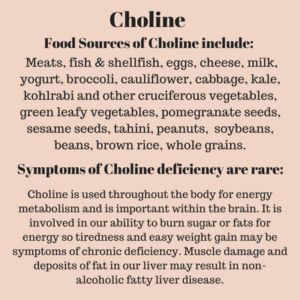T cells are a group of white blood cells with immune functions that may be beneficial or which may promote inflammation. They can change from one type of T-cell to another based on the amount of oxidative stress chemicals present in their surroundings. Our own body can produce antioxidants that reduce oxidative stress when we have adequate Nrf2. We also can get antioxidants from foods and often the foods that are good sources of antioxidants also contain phytonutrients that promote our own production of Nrf2 which then can help us produce our own types of antioxidants. Other nutrients are also helpful for promoting T cells to become the less inflammatory producing types. (1)
Reduced antioxidant production and prevalence of the more inflammatory type of T cells may be involved in aging and many types of chronic illnesses including cardiovascular diseases, neurological disorders, carcinoma’s and leukemia’s, autoimmune disorders, inflammatory bowel disease and vitiligo. For more details see: (1) Figure 13)
See Table 3: Antioxidant Compounds of Natural Dietary Products with Role in T Cell Function. (1)
- Green tea: Catechin hydrate (CH) and Epigallocatechin 3-gallate (EGCG). Teas (white, green, and oolong), cocoa, grapes, berries, apples; Catechins are monomers of Flavan-3-ols; see more:(Flavonoids)
- Carrot, celeriac, parsnip, and parsley: Aliphatic C(17)-polyacetylenes. The Apiaceae plant family, see more: (Aliphatic C(17)-polyacetylenes) Commonly used herbs spices in the plant family include caraway seeds, coriander seeds/cilantro leaves, cumin seeds, dill, fennel; see more: (Apiaceae plants)
- Turmeric (yellow spice in curry powder): Curcumin (diferuloylmethan). See more: (Curcumin)
- Garlic: Ajoene. Organosulfur compound, others also present in onions, see more: (Ajoene/organosulfur compounds).
- Plant foods/beverages with yellow pigments: Chalcones (precursors for flavones). Chalcones are found in many plant foods including; “fruits (e.g., citruses, apples), vegetables (e.g., tomatoes, shallots, bean sprouts, potatoes) and various plants and spices (e.g., licorice),” see more: (Chalcones). Flavones, (found in Parsley, thyme, celery, hot peppers), are part of the Flavonoid group; see more: (Flavonoids).
- Anthocyanin (purple/blue pigments): Wild blueberry, bilberry, cranberry. Red, blue, or purple berries; red and purple grapes; red wine, Anthocyanidins combined with sugar molecules are anthocyanins; see more: (Flavonoids).
- Proanthocyanidin: Grape Seed and Jamapa Bean. Apples, berries, cocoa, red grapes, red wine; Proanthocyanidins are dimers and polymers of Flavan-3-ols; see more: (Flavonoids).
- Resveratrol: Peanuts; Grape skins, red wine; dark colored berries including blueberries, bilberries, and cranberries; dark cocoa; see more: (Resveratrol) .
- Lycopene: Tomatoes; guava, watermelon, papaya, pink grapefruit, mango; red sweet peppers, asparagus, purple cabbage, carrots: (Lycopene).
- Carrots and other orange/yellow fruits and vegetables: Beta-carotene (orange/yellow pigment, precursor to Vitamin A). Sweet potato, squash, carrots, apricots, cantaloupe, mango; broccoli, greens; red sweet peppers; tomato juice; black-eyed peas, beans; see more: (Vitamin A – provitamin A, beta-carotene, is found in plant sources)
- Vitamin A: Carrots, cheese, eggs, and meat. Liver; fish oils; fortified milk; see more: (Vitamin A-preformed, retinol, is from animal sources primarily).
- Vitamin B6: Whole grains, vegetables; liver, meats and fish; nuts; chickpeas/garbanzo beans and other beans, tofu; cottage cheese; banana; see more: (vitamin B6).
- Vitamin C: Citrus fruits, cantaloupe, kiwifruit, strawberries, cauliflower, the cabbage family, tomatoes, peppers, and greens, green peas, potatoes – see more: (vitamin C).
- Vitamin D: Cod liver oil, egg yolk. Fortified dairy products or orange juice, or other fortified foods such as breakfast cereals or meal replacement bars; salmon, tuna, sardines, krill oil; liver; some types of mushrooms; – see more: (vitamin D).
- Vitamin E: Wheat germ oil, sunflower oil. Nuts, greens, asparagus, pumpkin, mango, avocado – see more: (vitamin E).
- (1)
Disclaimer: Opinions are my own and the information is provided for educational purposes within the guidelines of fair use. While I am a Registered Dietitian this information is not intended to provide individual health guidance. Please see a health professional for individual health care purposes.
- Kesarwani P, Murali AK, Al-Khami AA, Mehrotra S. Redox Regulation of T-Cell Function: From Molecular Mechanisms to Significance in Human Health and Disease. Antioxidants & Redox Signaling. 2013;18(12):1497-1534. doi:10.1089/ars.2011.4073. https://www.ncbi.nlm.nih.gov/pmc/articles/PMC3603502/ (1)
- Flavonoids, Linus Pauling Institute, Oregon State University, https://lpi.oregonstate.edu/mic/dietary-factors/phytochemicals/flavonoids
- Christensen LP, Aliphatic C(17)-polyacetylenes of the falcarinol type as potential health promoting compounds in food plants of the Apiaceae family. Recent Pat Food Nutr Agric. 2011 Jan;3(1):64-77. https://www.ncbi.nlm.nih.gov/pubmed/21114468
- Apiaceae: Parsley or Carrot Family. Identify herbs, plants, and flowers. https://www.wildflowers-and-weeds.com/Plant_Families/Apiaceae.htm
- Curcumin, Linus Pauling Institute, Oregon State University, https://lpi.oregonstate.edu/mic/dietary-factors/phytochemicals/curcumin
- Garlic and Organosulfur Compounds, Linus Pauling Institute, Oregon State University, https://lpi.oregonstate.edu/mic/food-beverages/garlic
- Orlikova B, Tasdemir D, Golais F, Dicato M, Diederich M. Dietary chalcones with chemopreventive and chemotherapeutic potential. Genes & Nutrition. 2011;6(2):125-147. doi:10.1007/s12263-011-0210-5. https://www.ncbi.nlm.nih.gov/pmc/articles/PMC3092904/
- Resveratrol, Linus Pauling Institute, Oregon State University, https://lpi.oregonstate.edu/mic/dietary-factors/phytochemicals/resveratrol
- Top 10 Foods Highest in Lycopene, myfooddata.com, https://www.myfooddata.com/articles/high-lycopene-foods.php
- Vitamin A: Health Professional Fact Sheet, National Institutes of Health, https://ods.od.nih.gov/factsheets/VitaminA-HealthProfessional/
- Vitamin B6: Health Professional Fact Sheet, National Institutes of Health, https://ods.od.nih.gov/factsheets/VitaminB6-HealthProfessional/
- Vitamin C: Health Professional Fact Sheet, National Institutes of Health, https://ods.od.nih.gov/factsheets/VitaminC-HealthProfessional/
- Vitamin D: Health Professional Fact Sheet, National Institutes of Health, https://ods.od.nih.gov/factsheets/VitaminD-HealthProfessional/
- Vitamin E and Health, Harvard T. H. Chan School of Public Health, https://www.hsph.harvard.edu/nutritionsource/what-should-you-eat/vitamins/vitamin-e/


